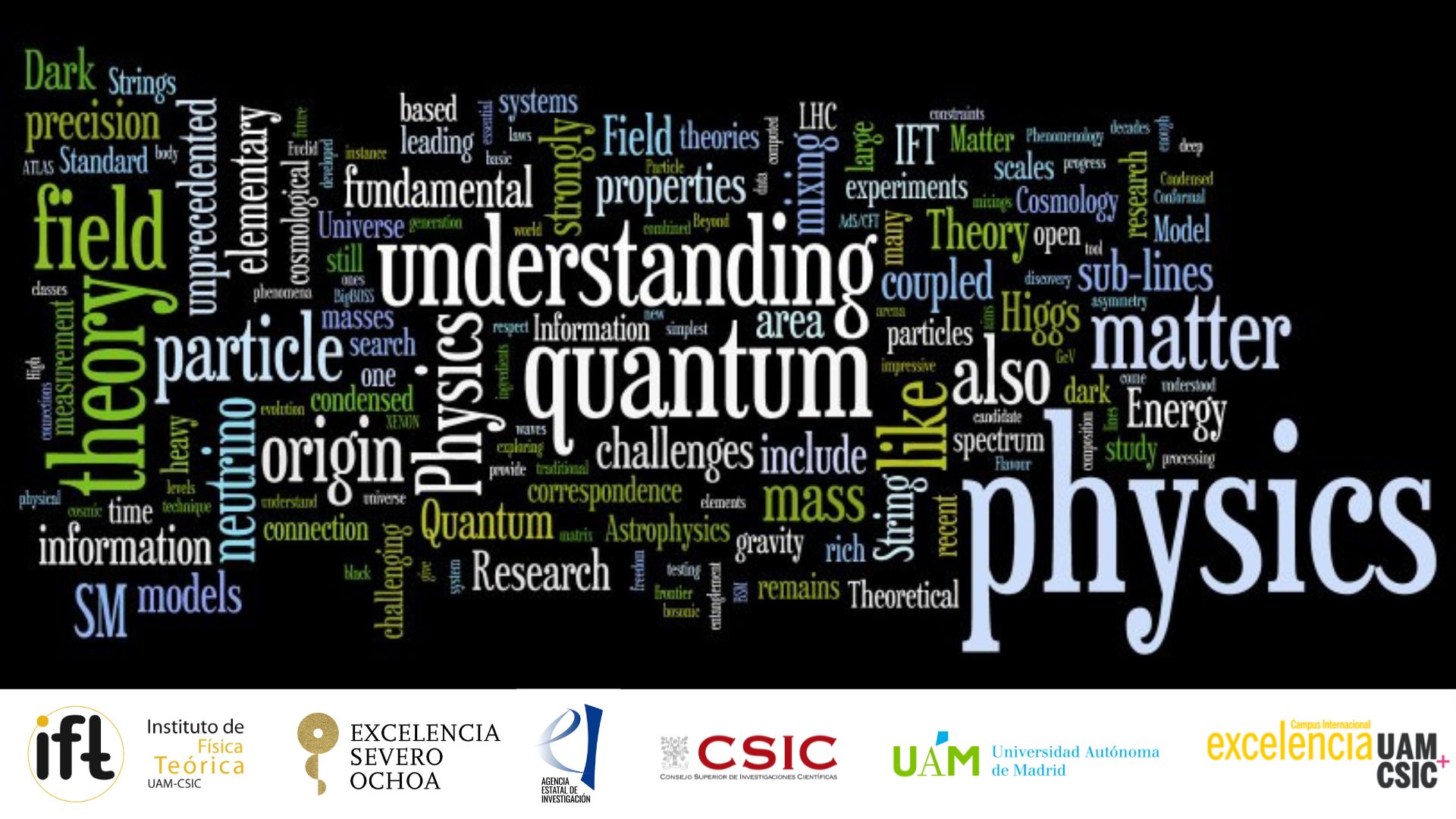Centro de Excelencia Severo Ochoa
Menu
Search

IFT Seminar Room/Red Room
We live in an age where the study of the Universe as a whole arrived at a precision that once would have been unthinkable. We know that Dark Matter (DM) makes up more than a quarter of the matter-energy composition of the Universe but yet direct experimental evidence, i.e. the discovery of the unknown dark matter particle, is still missing. Recently there is a notable interest in the crystal scintillator material sodium iodide (NaI) as target for direct DM searches. This is mainly driven by the long-term contradicting situation in the DM community: several direct DM searches, in particular DAMA/LIBRA, observes an annual modulation signal which matches the expected signal from particle DM, but is inconsistent (under standard assumptions) with null-results reported by most other experiments. However, the comparison of results from different experiments hold only under certain assumptions on the DM halo and the interaction mechanism of DM with our Standard model particles. This consideration is further augmented by the target material in use as the effect (e.g. interaction) significantly depends on the target of the experiment. Therefore, new experiments applying sodium iodide (NaI) are planned or right on their way to provide a material- and, thus, model-independent cross-check of the DAMA/LIBRA dark matter claim. Among them there is the COSINUS project which aims to use a novel experimental approach combining the DAMA/LIBRA detector material NaI with a cryogenic detection technique. Operating NaI crystals as low-temperature scintillating calorimeters at about 10mK has two distinct advantages: a lower energy threshold than DAMA/LIBRA, in particular for nuclear recoil events and the possibility for active background rejection by particle identification on an event-by-event basis. In this talk I will, from the view of an experimentalist, give an overview to already existing NaI-based searches and discuss in detail the COSINUS detector concept. I will conclude with achieved results of a first COSINUS prototype detector and its future perspectives.
Social media